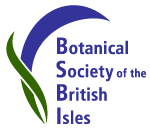William Wilson Saunders
From Wiki
Mr William Wilson Saunders F.R.S., F.L.S (4/6/1809-13/9/1879)
Contents |
Biography
Saunders, William Wilson (1809–1879), entomologist and botanist, was born on 4 June 1809 at Little London, near Wendover, Buckinghamshire, the second son of the Revd James Saunders (1770–1838), rector of Kirtlington, Oxfordshire. His name at birth was William Saunders, but owing to a proliferation of people with the same name, he later opted to include Wilson. This name change was carried out with the blessing of his friend William Wilson, father of George Fergusson Wilson, the chemist.
Saunders was educated privately until 1827, when he was sent to the East India Company's military academy at Addiscombe, Surrey. He passed as an officer, second in examination, and obtained his commission in the Royal Engineers in August 1829. He joined his corps at Chatham immediately, and proceeded to India in August 1830, but resigned the following year. During that year in India, however, he managed to amass a substantial collection of plants and insects which he brought home with him. On returning to England, he joined his uncle and future father-in-law, Joshua Saunders, in business as an underwriter at Lloyd's where, for many years, he was a member of the committee, and also of the shipping committee. He settled at East Hill, Wandsworth, Surrey, and in 1832 married his cousin, Catharine Saunders.
Saunders was an enthusiastic naturalist throughout his life, and considered an ‘accurate artist in Natural History subjects’ (Entomologist's Monthly Magazine, 120). It was also believed at the time that few contributed more to the advancement of entomology and botany than Saunders. He was one of the original 101 members of the Entomological Society of London, and was twice its president (1841–2 and 1856–7). He read his first entomological paper, ‘On the habits of some Indian insects’, to the society on 7 April 1834, and it was published in the Transactions (1, 60–66). He also wrote a number of other papers on Indian insects, but his entomological papers numbered no more than thirty in total. He edited Insecta Saundersiana (1850–69), which contained descriptions of many of the insects in his collection by Francis Walker, Henri Jekel, and Edward Saunders, his son. Furthermore, some of the illustrations featured in Hewitson's Exotic Butterflies were drawn from specimens in Saunders's collection.
After the death of his first wife Saunders married, on 24 June 1841, Mary Anne (b. 1819/20), daughter of Abraham Mello, of Middleton Stoney, Oxfordshire. In 1857 Saunders moved to Hillfield, Reigate, Surrey, where he started the Holmesdale Natural History Club in the same year. At Wandsworth he had made a large herbarium, and at Reigate he established a private museum and a notable well-stocked garden. He accumulated not only a vast collection of insects, but also of plants including many exotic specimens. He edited a number of botanical works including Refugium botanicum (1867–73), with descriptions of plants in his possession by Heinrich Gustav Reichenbach, John Gilbert Baker, and others, and illustrated by William Hood Fitch; and two parts of Mycological Illustrations (1871 and 1872), edited with Worthington George Smith, and including some of his own illustrations. He contributed materials for Brewer's Flora of Surrey, and was also author of more than thirty-five papers between 1831 and 1877.
In 1833 Saunders was elected a fellow of the Linnean Society, of which he acted as treasurer from 1861 until 1873. He was elected FRS on 2 June 1853, and fellow of the Zoological Society in 1861. He was also a treasurer, secretary, and vice-president of the Royal Horticultural Society. In 1873, following the loss of over-insured unseaworthy vessels at sea, and the collapse of the marine insurance business, Saunders was left almost ruined financially; he was forced to dispose of his large collections of insects (mostly to the British Museum and the Hope Museum, at Oxford), plants (both living and dried), and watercolour drawings. In 1874 Saunders retired to Worthing, Sussex, where he devoted himself to horticulture. After the death of his second wife he married, on 10 July 1877, Sarah, daughter of Robert Cholmeley, of Findon, Northamptonshire. He died on 13 September 1879, at his residence, Raystead, Worthing, and was survived by his wife, three sons, and two daughters. Saunders's seven children (four sons and three daughters) included William Frederick Saunders FLS (1834–1901); George Sharp Saunders FLS (1842–1910), entomologist; Edward Saunders (1848–1910), also an entomologist; and Mary Anne Saunders (d. 1927), a naturalist who married the zoologist Thomas Roscoe Rede Stebbing FRS (1835–1926).
information included from the herbariaunited database
Inferred associations
associated with
Collection activity by county
1827
1854
Search for specimens collected by William Wilson Saunders.
references and external links



